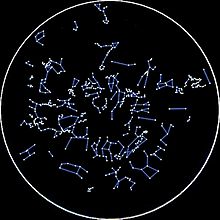Dendera Zodiac
Dendera Zodiac is included in a tour to Dendera. Artists carved on the Ceiling of the upper sun room the stars and the Zodiac as we know it today.
Dendera Zodiac Description
Brilliantly. they centered the sky disc on the north pole star, with Ursa Minor depicted as a jackal. Additionally, an inner disc is composed of constellations showing the signs of the zodiac. The Greco-Roman represented some of these in the same Greco-Roman iconographic forms as their familiar counterparts. They showed others in a more Egyptian form: they represented Aquarius as the flood god Hapy, holding two vases which gush water. Rogers noted the similarities of unfamiliar iconology with the three surviving tablets of a Seleucid zodiac and both relating to kudurru (‘boundary stone’) representations. In short, Rogers sees the Dendera zodiac as “a complete copy of the Mesopotamian zodiac”.
First, they arranged four women and four pairs of falcon-headed figures in the Dendera Zodiac, 45° from one another. They are hold up the sky disc. Then, the outermost ring features 36 figures representing the 36 asterisms used to track both the 36 forty-minute “hours” that divided the Egyptian night. Additionally, it features 36 ten-day “weeks” (decans) of the Egyptian year (with 5 days excluded). They oriented The square of the overall sculpture to the walls of the temple.
This sculptural representation of the Dendera Zodiac in circular form is unique in ancient Egyptian art. Second, more typical are the rectangular zodiacs which decorate the same temple’s pronaos.
Zodiaque de Denderah with the 48 constellations of Claudius Ptolemaus clearly identified among the present 72 constellations on this Zodiac.
History
During the Napoleonic campaign in Egypt, Vivant Denon drew the circular Dendera zodiac and the rectangular zodiacs. In 1802, after the Napoleonic expedition, Denon published engravings of the temple ceiling in his Voyage dans la Basse et la Haute Egypte. These elicited a controversy as to the age of the zodiac representation, ranging from tens of thousands to a thousand years to a few hundred, and whether the zodiac was a planisphere or an astrological chart. Sébastien Louis Saulnier, an antique dealer, commissioned Claude Lelorrain to remove the circular zodiac with saws, jacks, scissors and gunpowder. They moved the zodiac ceiling in 1821 to Restoration Paris and, by 1822, Louis XVIII installed it in the Royal Library (which they latter called the National Library of France). In 1922, ‘they moved the zodiac from there to the Louvre.





Comment (0)